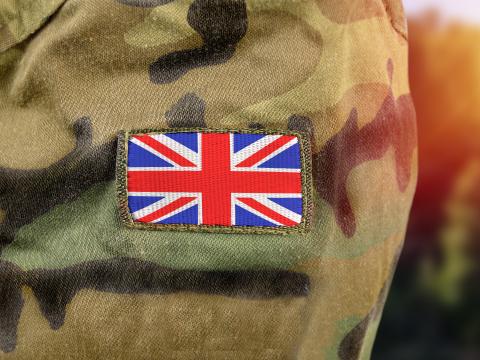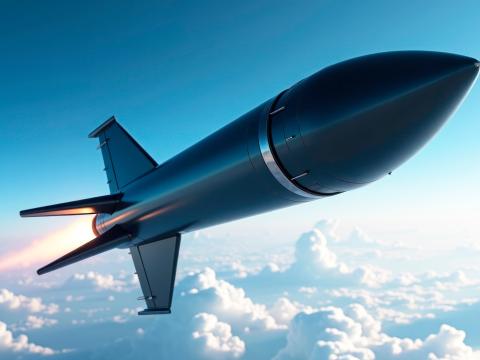Guard and Active Forces' Synergy Flourishes in Weekend Exercise
Informal signals operation leverages unique resources, creates real-world training environment.
A company-level signals training exercise between elements of the Arizona Air and Army National Guard and an active U.S. Army unit demonstrates the possibility of increased interservice cooperation at the tactical level. Participants in the informal two-day operation used the units’ combined assets to set up a communications grid and familiarize active duty and reserve military personnel with each other’s equipment and procedures.
As overseas deployments continue to grow in frequency and scope, National Guard and active duty units are increasingly working together and relying upon each other. Tactical-level coordination and understanding between the services is essential as the United States enters the uncertain territory of the 21st century. The exercise also fostered closer cooperation and camaraderie between National Guard and active duty military personnel.
The exercise, known as OPERATION TOTAL FORCE, is the brainchild of Capt. Carl P. Westphal, Army National Guard, who was inspired by experiences in exercises such as GRECIAN FIREBOLT, which are large, lengthy and infrequent. By comparison, Capt. Westphal realized that it is possible and practical for many complementary Guard and active duty units to train together more often in exercises that are conducted at the company level. In addition, this allows more involvement of unit-level personnel and provides the opportunity for the Guard to play a larger role in planning and directing operations, he says.
The September operation brought together the Arizona Army National Guard’s 356th Signal Company, the Delta Company of the Army’s 40th Signal Battalion, 11th Signal Brigade, and the Arizona Air National Guard’s 107th Air Communications Squadron. The goal of the exercise was to set up a communications network linking various sites across Arizona. Each unit contributed equipment. The Arizona Army National Guard and Army companies provided heavy troposcatter units and the Arizona Air National Guard furnished a tactical satellite communications unit, a switch connection and additional troposcatter equipment.
Capt. Westphal contacted the Army’s 40th Signal Battalion to gather input on how a company-level exercise could be conducted without disrupting the unit’s day-to-day training. The goal was not to have a big event, but rather a small operation involving two or three units. This is the third and largest weekend exercise he has conducted with the Army this year.
The commander of the Army’s 40th Signal Battalion, 11th Signal Brigade, Lt. Col. Darryl C. Dean, USA, supports these efforts. He observes that what makes operation total force unique is that it originated entirely from the company level instead of being mandated by the Department of the Army (DA), a major command or a brigade commander. “This is not funded by the DA. It’s just two local company commanders—one active, one Reserve/National Guard—getting together and saying ‘Let’s make something happen,’” Col. Dean explains.
According to the Delta Company’s commander, Capt. Bill Deagan, USA, keeping the communication at the unit-commander level enhances coordination. Both his and Capt. Westphal’s superiors have given them a great deal of flexibility to work with each other. With the exception of getting approval to use specific frequencies for an exercise, they are free to plan and coordinate exercises at their level by simply calling or e-mailing each other, he notes.
Another benefit of the event is that it exposes soldiers to different types of communications gear. Capt. Westphal notes his troops are only experienced with the TRC-170 heavy troposcatter system; however, in a real operation, they would have to integrate with a variety of communications systems.
“We don’t get all the integration pieces that you’ll see in a real-world echelons above corps network. In that space, there’s going to be [U.S.] Air Force, tactical satellites and switches. The network is going to be much more complicated. This is an opportunity for us to get what I consider real-world network training experience to deal with some of the things we’re going to have to deal with,” the captain says.
One of the challenges of the exercise was integrating the 356th’s TRC-170 troposcatter equipment with the 107th’s troposcatter/satellite/support radio (TSSR) wireless network, tactical satellite link and switch and then enabling the active Army to communicate directly with the Air National Guard over that network. This was something the 356th had never done before, Capt. Westphal explains.
Unlike other forms of tactical field communications, which are limited to a 30- to 50-mile operational radius due to the horizon, troposcatter equipment provides over-the-horizon service by using a high-powered amplifier to bounce radio signals off the troposphere. This capability enables a unit to broadcast a microwave signal up to 150 miles. The disadvantage of heavy troposcatter equipment is that the microwave dishes are large and must be anchored into the ground using a pneumatic drill. Col. Dean observes that the process of setting up the dishes and equipment and then powering them can take up to five hours. Smaller mobile subscriber equipment can be set up and operational within 30 minutes.
The heavy troposcatter equipment is a low-density system for the Army because it has only about 50 units in service. This is a niche technology because it is used strictly for echelons above corps level, Capt. Westphal notes. Two types of troposcatter equipment exist: V2 is a heavy troposcatter, while V3 is a light version. Because of its size and set-up time, heavy troposcatter equipment fills the higher echelons niche while light troposcatter equipment, which is more mobile and faster to set up, is used at the division and brigade levels.
Though it is cumbersome to assemble and put into place, heavy troposcatter equipment offers the advantage of a “big pipe” for communications with greater range and bandwidth than any other troposcatter system. This makes it suitable for echelons above corps, which are not expected to move frequently, Capt. Westphal explains.
For OPERATION TOTAL FORCE, a voice network across Arizona was deployed, connecting each of the sites and maintaining the network over the course of the weekend. Some of the sites were more than 150 miles apart. Capt. Westphal notes that the Army and Guard have the capacity to transmit data across the network via the Air Guard’s digital group multiplexing system, but this capability was not tested in this scenario. The signal sites were in a mix of locations, ranging from garrison sites such as Phoenix to tactical field sites at Florence, Fort Huachuca, Picacho Peak, and Davis Mothan Air Force Base.
According to Capt. Westphal, it was a successful exercise because all of the communications links were established as planned and within the allotted time. He received positive feedback from the soldiers and commanders in each component as the event progressed.
Some difficulties were encountered, however. While the operation generally was a success, the issue of the operational window emerged, Capt. Westphal explains. Because the Guard had to return to base by the end of the weekend, the equipment had to be dismantled and moved by a designated deadline. Consequently, the Guard had to begin shutting down the exercise by early Sunday morning. If the units had 12 more hours to work, every goal of the event would have been accomplished, the captain says.
The exercise also allowed the soldiers of the 356th Signal Company to gain experience with common equipment such as TSSRs and remote multiplexer combiners. Capt. Westphal notes that while this equipment is widely used in the signal community, his unit does not have this capability because it is geared to provide only transmission services and has no switching capability.
Both the Army and the Air Force use the TRC-170 (V2) system; however, the trunk encryption devices used by each service are slightly different. Although the systems are compatible, this disparity caused a delay when incorporating the device into the network, Capt. Westphal remarks.
Each unit also had its own start-up procedure for their troposcatter equipment. To prevent miscommunication, the units proactively coordinated the start-up procedure to be used for the exercise. In real-world deployment, this could become a significant issue because units may not know which units they will have to connect with or have the opportunity to coordinate before deployment, Capt. Westphal observes.
Power-generating equipment was another issue that had to be addressed. Despite being a force support package unit, the 356th has old generators that are a different model than those used by the Air Guard and the active Army component, Capt. Westphal says. In an actual deployment, his unit would have difficulty getting parts and support for these generators, some of which are 20 years old and are showing significant wear, he adds.
The event provided participants with additional training with the troposcatter equipment. Other company commanders appreciated the extra training the exercise offered for their Track 170 operators because some of these technicians do not get enough operational time, the captain notes.
For the future, Capt. Westphal is in favor of a somewhat larger exercise conducted every September, with added features such as videoconferencing and a 39-Delta switch from Fort Huachuca and the inclusion of the Nevada National Guard. However, he cautions that these exercises must be planned to avoid adversely affecting the 40th Signal Battalion because it is an active unit with deployment requirements.
While more exercises of this type would be beneficial, Capt. Westphal continues, overextending units is a sensitive issue. The National Guard trains on weekends, a time when most active military personnel are off duty. Scheduling must be done carefully, Capt. Westphal warns, out of consideration for the morale of active units, which could be disturbed by requiring some soldiers to participate in exercises while others are off duty.
Because the Guard also handles natural disaster relief, this type of exercise acts as a capabilities demonstration for the state of Arizona. Since the 356th is outfitted only with heavy troposcatter equipment, it does not have substantial inherent capability during emergencies; however, by working with the Air National Guard and active components in an arrangement similar to the exercise, the signal company could provide communications service to any part of the state during a statewide telecommunications emergency, Capt. Westphal states.



Comments